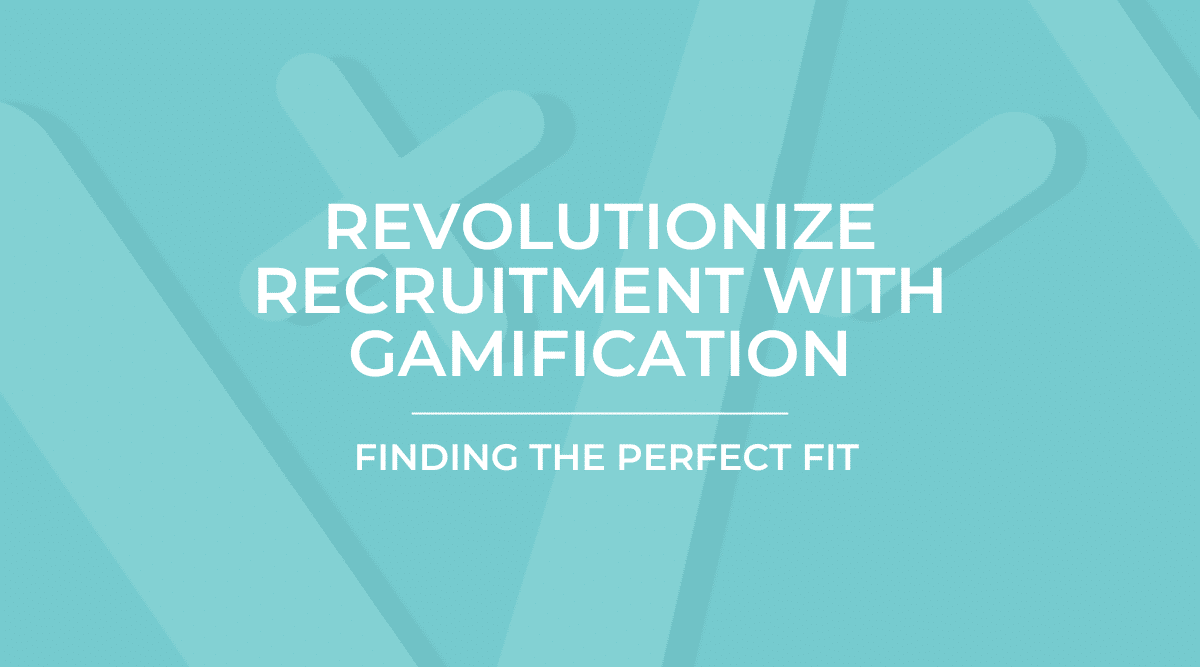The benefits of gamification have been increasingly well-documented over the past several years, with the most current statistics showing that 70% of Global 2000 companies use it in some form. These benefits are evident, not only in terms of the bottom line (the same source states that companies using gamification are seven times more profitable) but the satisfaction of consumers and productivity of employees. However, one of the best reasons to invest in gamification is its ability to help companies choose individuals with the ideal skill set, personality, and alignment with its goals and mission. Here are some ways in which gamification can revolutionize your hiring practices, and some things to keep in mind while designing this process.
Sifting Through Applicants
First and foremost, gamification helps you sift through applicants more quickly and efficiently, and alert you to hidden gems you might otherwise pass over. Yes, everyone interested in the job will have to meet certain criteria (i.e. a particular degree or level of experience), but what about those qualities or shortcomings that are not always obvious on a CV or even during an interview? Ask any employer and they will tell you that credentials on paper don’t always translate to performance. On the other hand, an applicant may not give a great interview but have a unique set of gifts and abilities that would perfectly complement your existing team. This is similar to the student who excels in class but does not perform well on standardized tests. Gamifying the hiring process allows you to mine for talent in a new way.
Be sure the gaming experience evaluates the precise skills you need for a particular role. For example, if the position requires in-depth analysis or product development you may have a different game or reward system than you would if you’re building a sales or customer service team.
Gamification for Vetting
One of the reasons gamification is such a great vetting tool is that it presents an opportunity for a candidate to show how they will perform while working for the company, rather than simply talking about what they would do. Think about creating a process that moves beyond a question-and-answer format to an immersive experience with the types of challenges they will encounter, not just on a daily basis but during a crunch time or crisis. For example, a person may be equipped to manage the rollout of a new product when things are going smoothly, but how would they handle the disruption of the supply chain that delays a key component? In addition, it should also include the tools (i.e. processes and procedures) that will support them in creating workarounds.
A key benefit of gamification in the workplace is its encouragement of both healthy competition and collaboration, and your gamified recruitment tool should do the same. Depending upon your organization and the role you are seeking to fill, you want to make sure the gamification process gives candidates ample opportunity to demonstrate these abilities. For example, you might have scenarios in which the applicant will have to brainstorm with colleagues and others where they work independently; also important would be to have them choose between the two options.
Boosting Your Brand
Gamification also boosts your company’s brand. There is a reason companies like Google and Apple are consistently lauded as the best to work for: they focus on creating an environment where creativity and individuality are not only encouraged, but nurtured. Make sure the hiring process is fun and accurately reflects what the candidate will experience if they are hired. For example, do employees get kudos for out-of-the-box thinking? Does it depict an environment that is diverse and inclusive? Does it indicate how stress is managed in the workplace to prevent burnout? Also, don’t forget the reward for successful performance – be it points, a cash bonus, or some other perk. Does the company send the team with the highest quarterly sales on a trip to the Caribbean? If so, make such a trip, or something similar, the prize in the interview game. The important thing is that it’s realistic.
Feedback from Candidates
Finally, be sure to get detailed feedback from candidates, whether they progress to the next stage of the hiring process or not. Was the process (game) enjoyable? Did it clearly communicate the company’s mission and values? Did it make them feel more or less excited about working for the company? Did they feel the company would honor the skills they bring to the table? Provide additional space so they can elaborate, rather than simply clicking a yes or no ‒ this way, you can gauge its success and make changes as needed.
Gamification facilitates a greater level of transparency than is typically found during a traditional interview, helping to ensure a good fit for both company and candidate. Just as valuable, it is an excellent measuring stick, providing the organization with a clear picture as to whether their current working environment (gaming included) lives up to what is promised during the hiring process. It also gets the word out there that the company is forward-thinking and committed not only to quality work, but to their employees’ job satisfaction. In other words, that it’s a place they will love coming to, in person or virtually, each day.



